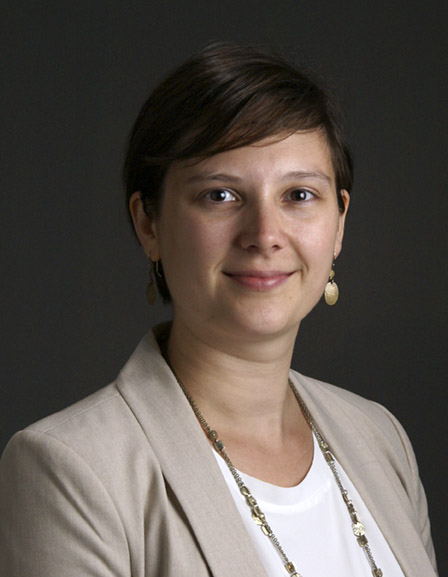
Dre Jenna Boyd

Dr. Rachel Langevin
Dre Jenna Boyd et Dre Rachel Langevin, Section du stress traumatique
Traumatic Stress shows itself in more than just PTSD, and can be caused by more than just major single events. Dr. Jenna Boyd and Dr. Rachel Langevin are working to help those affected by trauma, and working to learn more about traumatic stress as they do.
“In the 80s and early 90s, there was nothing known about the victims of child sexual abuse. Now, there are volumes of research on the subject.”
Dr. Rachel Langevin is an assistant professor of counselling psychology at McGill University, as well as a clinical psychologist who does a bit of private practice. She is currently the Chair-Elect of the CPA’s Traumatic Stress Section. She says her PhD advisor was one of the pioneers in researching the sexual abuse of children in Quebec and Canada. At the time she decided to work on this, it was a reality that many people didn’t even recognize existed. The first step had to be acknowledging, socially, that the sexual abuse of children DID exist, and that often it happened within families. It may seem difficult to imagine now, but it took a very long time for this kind of abuse to be recognized as real in the public at large.
“In the early 80s, some researchers in the States, like David Finkelhor, started trying to really understand child sexual abuse and the specific impact it had related to other traumatic experiences. One of the first to start working on it here in Quebec was Martine Hébert, who was my PhD advisor. Her advisor had been a specialist looking at perpetrators of sexual abuse, but not victims – and Dr. Hébert was the only one looking at that side. She did her research with a lot of autonomy, because no one else had that expertise!”
Today, child sexual abuse is one of the most-studied types of child maltreatment. Research into traumatic stress has come a long way in a short time. Dr. Jenna Boyd is a psychologist at an anxiety treatment and research clinic at St. Joseph’s Healthcare Hamilton, and an assistant professor in the department of psychiatry and behavioural neuroscience at McMaster University. She is the current Chair of the CPA’s Traumatic Stress Section, and specializes in the treatment of Post-Traumatic Stress Disorder (PTSD).
“Cognitive Behavioural Therapy (CBT) is my main area of practice. A little more than 20 to 30 years ago, the main therapies that we’re using now were just emerging. From the perspective of treating PTSD, there was almost a thought that we couldn’t really treat it, but we could kind of help people cope with it. Today, we do have some really effective treatments.
Potentially traumatic experiences are pretty common. Over the course of their lives, most of us will be exposed to a traumatic event. It could be the death of someone close to us, a serious injury, sexual or intimate partner violence, or a frightening near-death experience. For some of us, it’s part of our jobs – a first responder or someone in the military could be exposed to a traumatic event more than once in a day. ‘Traumatic stress’ is what comes about as a reaction to that trauma.
It’s quite normal to have a stress-based reaction to a traumatic event or series of events. Most people who are exposed to one will have some kind of stress-response as a result. Many people will recover over time through a process of natural recovery, but others may go on to develop PTSD. This is where the symptoms related to the trauma persist over a longer period of time. Dr. Langevin says those symptoms can be multiple, complex, and varied.
“We encounter many different symptoms in this line of work. Re-experiencing symptoms, like nightmares, intrusive memories. Someone might be doing something and suddenly an image pops into their head causing distress. Every time they’re exposed to something that might resemble the trauma they endured, or something that makes them think about it, they will have a stress reaction, and anxiety will rise up. That might lead them to the second category of symptoms, which is avoidance. People start avoiding things that remind them of the trauma because it’s too stressful and uncomfortable.
The third big category of symptoms is a change in cognition, mood, and self-image. This includes things like self-blame, taking an overly large share of responsibility over what happened, feeling disconnected from others, or feeling no emotion whatsoever. And finally, there are arousal and reactivity symptoms. This is a more physiological response, and includes things like always being on your guard and looking over your shoulder, being very easily startled, difficulty sleeping, irritability, and possibly self-harm behaviours.”
When a clinical psychologist specializing in trauma sees someone who presents with a cluster of these symptoms, that persists for a month or longer after the traumatic event, and those symptoms are affecting that person’s life, that’s when they start talking about something like PTSD. At that point, it is no longer a normal reaction, and it requires attention. As Dr. Boyd says, there are now many ways that attention can be delivered.
“We now have Cognitive Processing Therapy, Prolonged Exposure Therapy, Eye Movement Desensitization and Reprocessing (EMDR) to name just a few. These treatments have had a lot of research supports behind them over the past 20 or 25 years. We now know they’re really effective for many people, and we have tools where we can say ‘let’s try this and see if we can get you to a place where you’re functioning better’. Many people can return to some of the things in their lives that have been taken away from them.”
Treatments are always improving, clinical psychologists are always innovating, and researchers are continually expanding our understanding of trauma, stress, and the interaction of the two. Dr. Langevin’s current research is looking into the intergenerational continuity of family violence, including child maltreatment and intimate partner violence.
“We know that a parent who was maltreated in their childhood is at increased risk of having a child that will also experience trauma and maltreatment – whether or not it’s at their own hands. Sometimes the mistreated parent becomes a perpetrator of abuse, and other times that doesn’t happen but the child still ends up being mistreated by someone else in the environment. There’s this continuity that we see in the data and in clinical practice, but the mechanisms that are responsible for this – the protective factors, the risk factors that are involved – are still trying to be understood. What makes one parent end up in a cycle where there is repetition of their own maltreatment history with their child, versus parents who are able to break those cycles? We’re looking to help parents who have been in this situation end the cycle, and foster resilience and positive adaptation in their children and themselves.”
Dr. Langevin is quick to point out that treating traumatic stress, and the problems that come along with it, go far beyond PTSD. She says,
“Everything can be associated with trauma, including behaviour problems, emotion regulation, depression, anxiety, bullying, difficulties with attachment and relationship. There are a host of different areas where we can see the consequences of traumatic events. PTSD is just one part of it, there’s a lot more. And we’ve come a long way in learning about it!”
